I remember as a teenager hiking with my youth group up a place called Devil’s Marbleyard in western Virginia. This is essentially a mountain (in the East Coast sense) of angular boulders. When we got to the top, one of our youth leaders explained how God made this place exactly how it is today. He said that some people would say it formed by accident, but that God made it ex nihilo to be the way it was for us to enjoy it. Even as a teenager I was skeptical of that answer. It was, after all, a giant pile of rocks.
The views expressed in this article reflect those of the author, and not necessarily those of the New Creation.
This approach is common in churches and Christian schools. I often ask my students how something came to be or why it is the way it is. Many at the beginning of the year (and some sadly even at the end) just say, “God made it that way.” Such an approach always seems to blame everything we see around us on God’s supernatural creation. But that’s a little silly. After all, when you look around outside, essentially nothing you see around you was supernaturally created by God. The trees you see descended from other trees, which descended from other trees, which descended from other trees, all the way back to the original trees that God did, in fact, create supernaturally during the Creation Week.
“God Made It That Way.”
We recognize that God built into the natural world mechanisms of change: biological reproduction, recycling of nutrients into the soil, the rock cycle, plate tectonics, etc. Nevertheless, God is just as much the Creator and designer of your dog’s new puppies as He is of the sun. It’s a great error to think of God as only involved in the supernatural.
Additionally, the “God made it that way” answer is very unsatisfactory for the scientist or the curious mind. After all, God could have done it any way He wanted. So why is it this way? Think about theistic scientists like Newton, Galileo, and Kepler. They weren’t content to stop their investigations simply because they believed God made everything. They wanted to know how things worked and why they were the way they were.
Homology: Biology’s Greatest Mystery
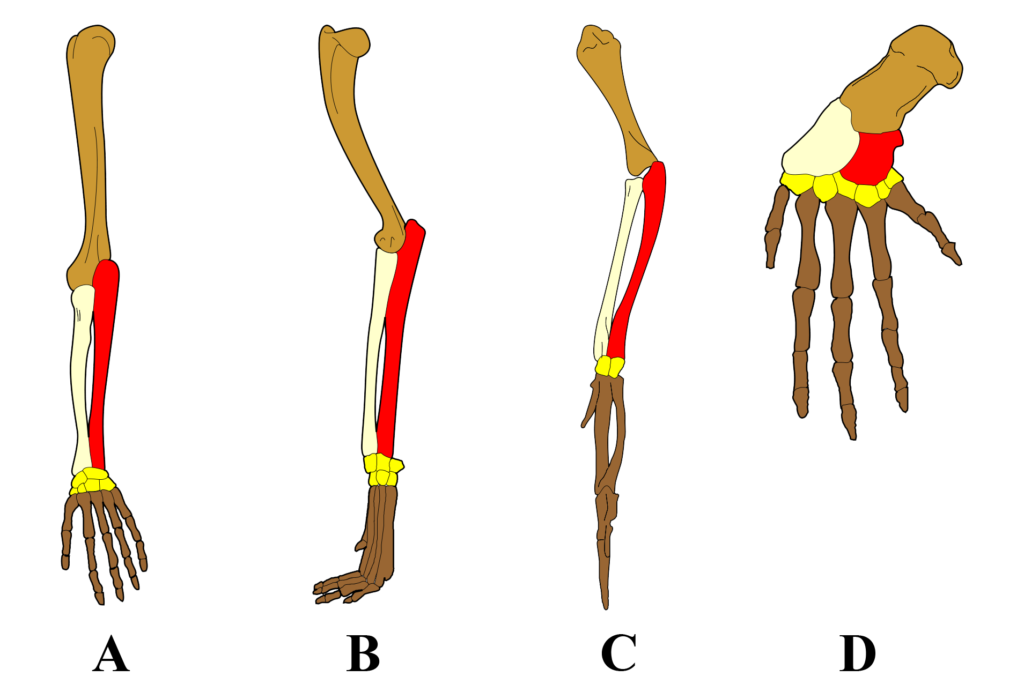
By Petter Bøckman, based on File:Homology vertebrates.svg by Волков Владислав Петрович – Own work, CC BY-SA 3.0,
One of the issues that interests scientists of all worldviews is the question of biological similarity. Why do some creatures look more similar to each other than other creatures? When you look at a four-legged animal, they all use the same bones to make up the forelimbs. Whether you’re looking at a frog, dolphin, crow, turtle, or Dimetrodon, they all have an upper arm bone (humerus), two lower arm bones (radius and ulna), wrist bones (carpals), hand bones (metacarpals), and finger bones (phalanges). Jellyfish don’t have this structure. Neither do crabs, sharks, starfish, worms, or snails. So, what’s going on?
Richard Owen, the great British anatomist of the 1800s, first coined the term “homology” to describe these structures. He recognized the vertebrate arm, for instance, as a common design blueprint. He contrasted homology with another term he coined: “analogy”. Analogy describes structures with similar functions but different make-up. For instance, bats, pterosaurs (“pterodactyls”), and birds all have wings, but they do not share similar wing structure.
All-in-One Example: Analogy and Homology
Most of a bird’s wing consists of long feathers coming off of the arms. In contrast, bats and pterosaurs have short, fuzzy integument. Bats and pterosaurs have membranes that stretch from their arms to their bodies to make their wings. In a bat, the membrane stretches from the body across four elongated fingers, and they have one free finger (the thumb). Pterosaurs, however, typically have three free fingers and all have one incredibly long finger (their fourth digit) which stretches out the flight membrane away from the body. Thus, it’s true that birds, bats, and pterosaurs all have wings, but the construction of their wings is drastically different, making the wings an example of analogy. However, they all share the same bones (humerus, ulna, radius, etc.), which is an example of homology.
The “God made it that way” answer is very unsatisfactory for the scientist or the curious mind. After all, God could have done it any way He wanted. So why is it this way?
Matt McLain
Darwin’s Homology
Charles Darwin had a different thought about homology. He considered homology to be evidence of common descent. He concluded that the more similar two animals were in structure, the closer they were evolutionarily. They shared a more recent common ancestor with each other than either did with an animal that did not possess those structures. The current evolutionary model, which has changed a lot since Darwin’s day, still assumes this basic principle. Additionally, the modern-day evolutionary model accounts for analogy through convergent evolution (convergence). Convergence is where two animals evolve similar features (e.g., wings) independently over time.
The Pattern of Life

By putneymark – originally posted to Flickr as Galapagos penguin Isabela Elizabeth Bay, CC BY-SA 2.0.
The problem in understanding the pattern of life is that people have desired to describe it with only a single explanation. Creationists traditionally wanted every feature in every organism to be directly related to God’s special, supernatural creative act. This of course leads to issues of the origin of mechanisms of natural evil in animals (e.g., venom, parasitism). Additionally, it is unable to explain fascinating patterns we see in nature such as biogeography and evidences of speciation.
For instance, why is there a penguin species in the Galapagos Islands that is most similar to another species that lives in Peru and Chile (Humboldt penguin)? Many Christians I meet forget that life had to recover after Noah’s Flood. The Galapagos Islands almost certainly didn’t exist before Noah’s Flood. It also seems unlikely that God supernaturally placed animals in places following Noah’s Flood. In the conventional model, the Galapagos penguin descended from some Humboldt penguins that found themselves in the Galapagos (perhaps due to a storm) and decided to stay there. Because these penguins were separate from their relatives on the mainland, they began to change very slightly (allopatric speciation). That explanation makes a lot of sense. Of course, there’s no room for it in the old school creationist explanation for biological similarity.
And the Evolutionists Say…
Evolution countered with a different all-encompassing theory: all similarities between organisms are because of shared ancestry. This is the idea of universal common descent–the evolutionary tree of life. On the small scale, this idea makes a lot of sense. Normally parents and children look more similar to each other than either does to non-relatives. It’s a regular thing to hear people say that they look a lot like their grandparents or great grandparents. Evolution just took this kind of reasoning and extended it out over millions of years andthe whole tree of life.
This seemed to be the universal explanation for the patterns of life. Some problems existed, however, called homoplasies. It turned out that a lot of features that scientists previously had assumed were homologous between two animals actually had nothing to do with common ancestry. For example, researchers traditionally united elephants, rhinos, and hippos in a group called Pachydermata (“thick skin”). But in the evolutionary model, these organisms are not each other’s closest relative. That means they all evolved their thick skin convergently. This has become a big issue in constructing phylogenies. Which features are because of common ancestry and which are a result of convergence?
Problems for Universal Common Descent
A further issue that universal common descent faces is the Cambrian explosion. When Darwin wrote The Origin of the Species, he knew that the major divisions of animals, called phyla (plural of phylum), did not show any fossil evidence of sharing common ancestry of each other. The earliest fossils known (e.g., trilobites, brachiopods, clams) were from the Cambrian rock layers. Darwin hoped that we would discover Precambrian fossils below the known Cambrian ones. He hoped these fossils would bridge the gaps between the modern phyla.
As Darwin predicted, we have found Precambrian fossils. However, these fossils do nothing to resolve the abrupt appearance of phyla in the Cambrian. Besides unicellular organisms, most of the Precambrian fossils are of something called the Ediacaran biota. These organisms are of uncertain affinity, although most are probably animals. They are all soft-bodied and most are bizarre in appearance. Instead of resolving Darwin’s dilemma, the discovery of Precambrian fossils has only made the sudden appearance of distinct recognizable animals with complex body parts in the Cambrian that much more poignant.
An Orchard of Life
Neither direct creation of every species nor the common ancestry of all species fully explains the pattern we see in the organization of nature. However, both models have good points. The old creation model notes the obvious design and handiwork of God in organisms. In contrast, the evolutionary model picks up on the fact that organisms have changed and diversified in real time, which accounts for many of the similarities and differences we see between species. This should make us suspect that the true pattern of life must contain elements of both of these models.
That’s where Kurt Wise, Todd Wood, and other creationists propose baraminology (the study of the created kinds). Whereas evolution suggests a tree of life and old school creationism suggests a field of life (where each blade of grass is a species), baraminology proposes an orchard of life. In this model, there are different created kinds of organisms, and each created kind is represented by a tree. Animals and plants have changed over time within their created kind boundaries. This model does recognize the evidence of change and diversification in organisms and fit it within Scriptural guidelines. However, the orchard of life doesn’t immediately address all of the patterns we see in nature. After all, dogs, humans, and trout all belong to separate created kinds. So why do dogs look more like humans than fish do?
Commonality by Type
As we consider biological similarity and its origins, we must understand that ultimately all of the fabric of nature is by common design. By common design, I mean that whether God supernaturally created things ex nihilo or whether they changed and developed in real time in our natural world according to the design built into them, all of the pattern of life is due to God’s creative genius. As such, nature in all of its beauty, splendor, and complexity brings God glory.
I would like to suggest that the similarity we see in nature is a result of one or more of the four expressions of common design.
Common Blueprint
Type 1 is called common blueprint. Sometimes two organisms share a feature because they both fall under the same design archetype. These are considered to share a common blueprint. The common blueprint concept follows the idea of a nested hierarchy. For example, there are no lemurs that are not primates; there are no primates that are not mammals; there are no mammals that are not tetrapods (four-limbed vertebrates); and there are no tetrapods that are not vertebrates. It makes sense, then, that lemurs, pigs, lizards, and fish all have bones. They all follow the vertebrate body plan. Thus, the commonality of bones between those different types of animals results from the common blueprint type of common design.
Common Descent
Type 2 is called common descent. This is when two organisms share a common feature because they both descended from the same ancestor. Horses, zebras, and donkeys all look so similar to one another because they all share a common ancestor. Organisms that share a common ancestor are all members of the same created kind. Organisms united by a common blueprint, however, need not be.
Common Event
I have termed type 3 common event. Common event is the idea of convergence1: two unrelated animals acquiring a similar feature because they are faced with similar ecological stresses or available niches. A good example of this phenomenon is what I call the placental/marsupial doppelganger effect. For many familiar placental mammals, there are marsupial versions. There are placental moles and marsupial moles, placental gliding squirrels and marsupial gliding possums, etc. A striking example of convergence comes in the form of saber teeth. Many people are familiar with the extinct saber-toothed cat (Smilodon) found in American fossil deposits like La Brea Tar Pits. However, many people do not know about a South American saber-toothed marsupial called a Thylacosmilus. This creature looks remarkably similar to the saber-toothed cat. These animals are members of separate created kinds, so they must have developed their saber teeth independently.
Common Function
Now, you might be thinking, “How do you know the features you’re calling convergences aren’t just created similarities?” This is a good question, and it leads us to type 4: common function. Some features that would be called convergences from an evolutionary perspective may not have actually developed over time, but may have instead been supernaturally created.
For instance, birds, bats, pterosaurs, and insects all have wings which allow them to fly. Whether you’re a creationist or an evolutionist, you do not consider the wings of these animals to have descended from a flying ancestor. The evolutionist would see these wings as all evolving independently, which would make this an example of convergence. The creationist would see these as separately created forms. According to the Common Design scheme they would consider them as belonging to the common function type. Common function structures are supernaturally designed by God, rather than becoming expressed in the descendants of God’s original creations through God’s natural means over real time. These structures, despite being similar, are present in organisms from different created kinds. They are not directly related to nested hierarchy.
Comparing Commonalities
Let’s think about comparing the conventional evolutionary understanding of biological similarity with this scheme. In the evolutionary model, there is only one explanation for homology: common descent. However, this scheme reveals that there are (at least) two explanations for homologous traits in the creation model: common blueprint and common descent. Likewise, the evolutionary model sees analogy as arising simply through convergence, whereas this scheme allows for convergence (common event) and common function.
What about comparing old school creationism with this model? In old school creationism, all biological similarity was due to God’s initial creative act in the Creation Week. This model attributes some biological similarity as due to God’s ex nihilo creation (common blueprint and common function). Yet it also recognizes some features of organisms as changing/appearing in real time (common descent and common event). Thus, rather than simply saying, “God made it that way” for every feature on every animal, we can start thinking through how and why certain features are present within God’s common design.
Which of the Four Types?
Now you ask, “How can you tell when a feature is from common function as opposed to common event, for instance?” That is a tricky question, and it’s where this scheme hits reality. How can we be certain whether moles and marsupial moles are convergent (common event) or were designed with common function? That’s where we turn to the fossil record to give us insight. The fossil record can help us better understand which animals belong to the same created kind, especially for post-Flood (Cenozoic) fossils. But even with fossils, we still have a similar problem. How can we tell which of the four types of common design is the cause of this particular similarity? Additionally, there are gaps in the fossil records of various groups, and that can further confuse the process.
To figure this out, we’re going to have to use a combination of different methods and modes of reasoning. Statistical baraminology is of great use here. If we can figure out which organisms belong in the same created kind, then we can begin to infer which similarities are due to changes in real time or visible designs in the creation week. If we see a trait that exists only among more recent species in a created kind (e.g., one-toed hooves on horses), then we can infer that that trait arose through common descent. And if we see another created kind doing the exact same thing (for example, one-toed litopterns (a group of extinct, South American, hooved mammals) appear to be descendants of three-toed ancestors, just like horses), then we can infer that the similarity between these animals is due to common event.
The Secret to Homology

So, having gone through this whole discussion, let’s revisit the question in the title. Why do dogs look more like us than trout? The reason is because dogs and humans are both mammals, whereas trout are fish.
When evolutionists say this, they mean that humans and dogs share a more recent common ancestor than either one does with trout. What I mean as a creationist, however, is that dogs and humans share a common blueprint (being mammals), that trout do not share. However, trout and mammals are united by common blueprint, too, since they’re both vertebrates.
Some creationists feel uncomfortable with saying that humans are like animals or are animals. This is an issue of semantics. Humans are completely and utterly distinct from animals in that they were specially created by God in His image. However, biologically, we are a type of animal. We have the same organs, bones, tissues, and cells as animals. From a scientific viewpoint, humans share more similarity with mammals than other types of animals. They are specifically most similar to the primates (lemurs, monkeys, apes, etc.). There’s nothing wrong with saying this (as long as you qualify it); it’s just an observable fact. It would be shocking if humans did not share biological and chemical similarities to the rest of creation. If we didn’t, we wouldn’t be able to interact with it. We need similar organs, cells, etc. to process our food and live on this planet.
Conclusion
These truths remind us that we are “but dust” (we are made of the same elements as the dust, after all), and that we are creatures made by God. Recognition of these truths should lead us to humility and worship of a God who is so far beyond us in His substance, but shares with us His nature. And yet, the most amazing thing of all: He was made like us, like one of His creations, so that He might save us.
Footnotes
- It also includes other possibilities, like horizontal gene transfer, but we’re going to focus on convergence for the sake of this post. ↩︎




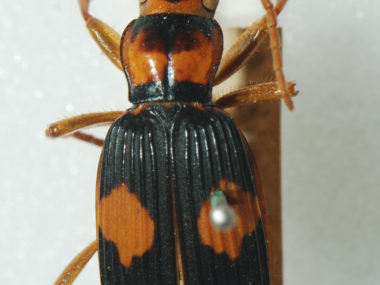
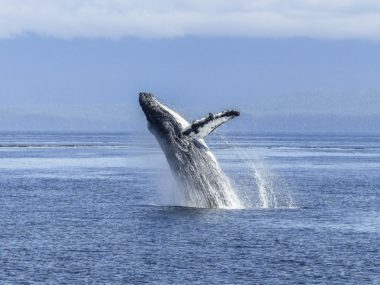
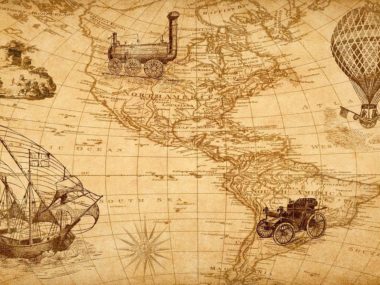
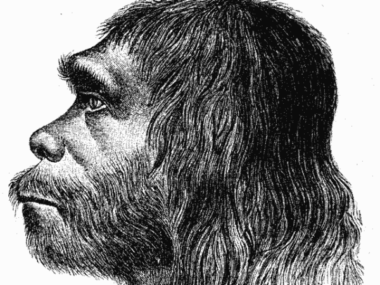




Excellent. I love how you’ve categorized the 4. I think this will help creationists to think better on the topic and to better discuss these things with naturalistic evolutionists. Funny. I just stumbled upon this article because I was speaking with an individual who said there’s basically no difference between fish and tetrapods but a rearrangement of bases. I don’t think that’s true, it’s quite a bit more complex than that.
Thanks & blessings!
~Chris